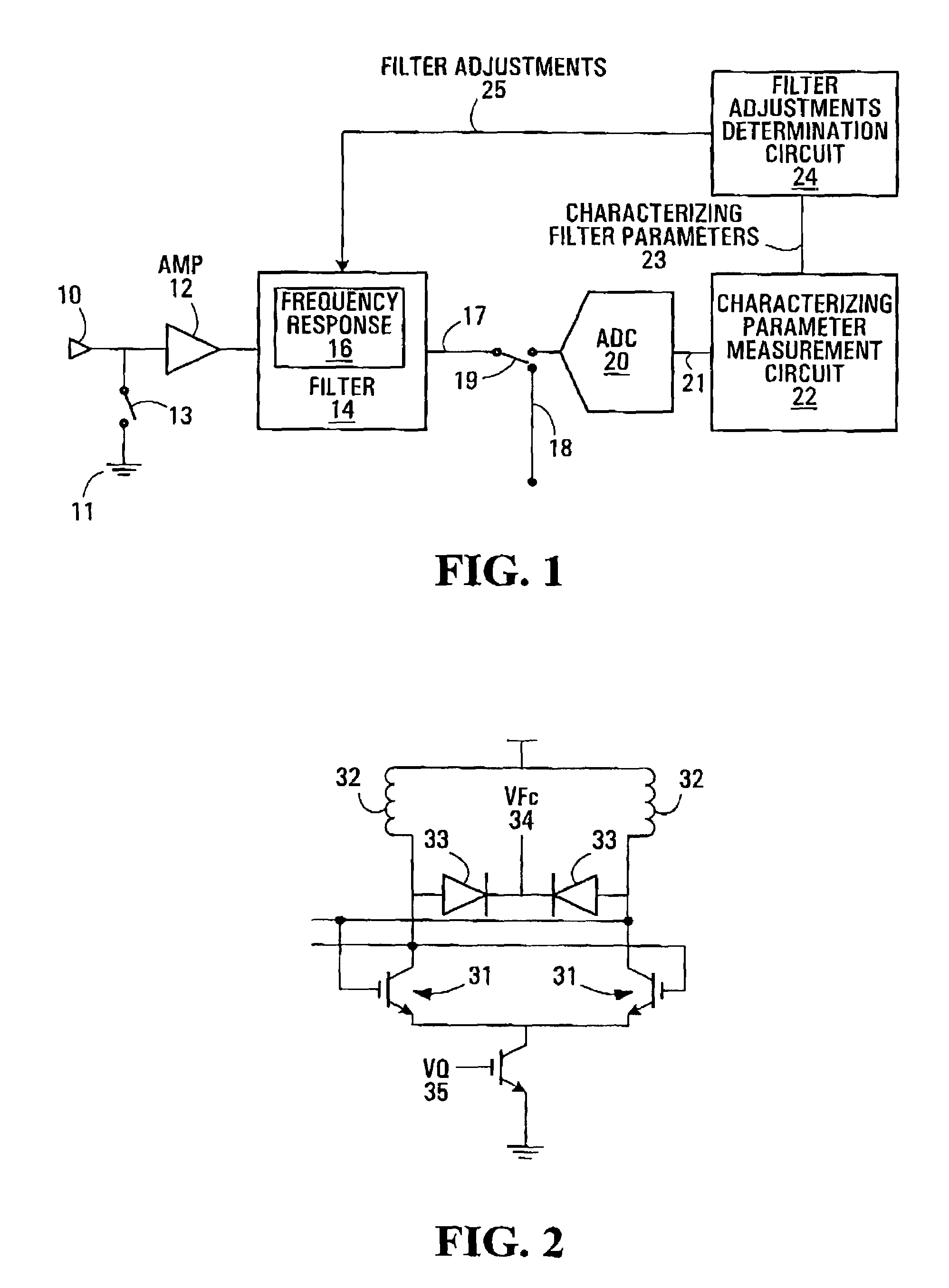Directly tuned filter and method of directly tuning a filter
a filter and filter technology, applied in the field of direct tuning of filters, can solve the problems of difficult or impossible to achieve using manual tuning methods, and low efficiency of automatic tuning methods, so as to achieve the effect of reducing the noise of master-slave circuits, avoiding the effect of affecting the performance of the master and slave circuits, and avoiding the effect of manual tuning
- Summary
- Abstract
- Description
- Claims
- Application Information
AI Technical Summary
Benefits of technology
Problems solved by technology
Method used
Image
Examples
Embodiment Construction
[0029]The present invention now will be described more fully with reference to the accompanying drawings, in which embodiments of the invention are shown. The invention may be embodied in many different forms and should not be construed as limited to the embodiments set forth herein; rather, these embodiments are provided so that this disclosure will be thorough and complete, and will fully convey the scope of the invention to those skilled in the art. In the drawings, like numbers refer to like elements throughout.
[0030]Referring now to FIG. 1, a first example of a digitally tuned filter arrangement is shown. An input signal 10 is shown input to an amplifier 12 which is connected to an analog filter 14. The input to the amplifier (AMP) 12 can alternatively be connected to ground 11 under control of switch 13. The filter 14 has an output 17 which is connectable either to an analog-to-digital converter (ADC) 20 or to an output 18 of the arrangement under the control of a switch 19. A...
PUM
 Login to View More
Login to View More Abstract
Description
Claims
Application Information
 Login to View More
Login to View More - R&D
- Intellectual Property
- Life Sciences
- Materials
- Tech Scout
- Unparalleled Data Quality
- Higher Quality Content
- 60% Fewer Hallucinations
Browse by: Latest US Patents, China's latest patents, Technical Efficacy Thesaurus, Application Domain, Technology Topic, Popular Technical Reports.
© 2025 PatSnap. All rights reserved.Legal|Privacy policy|Modern Slavery Act Transparency Statement|Sitemap|About US| Contact US: help@patsnap.com



